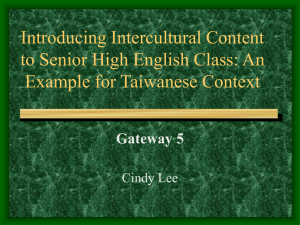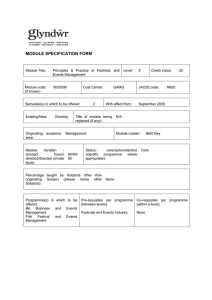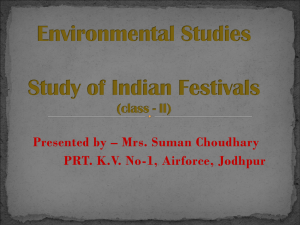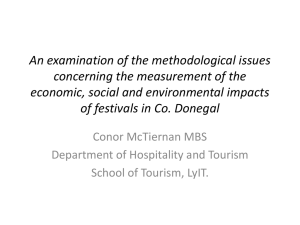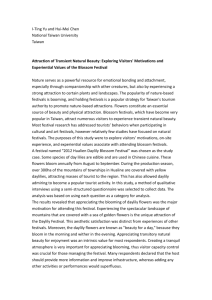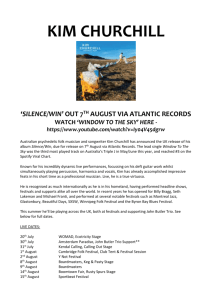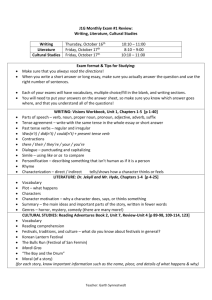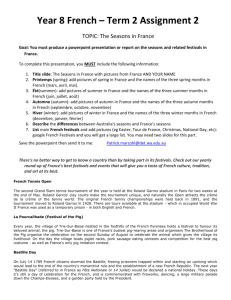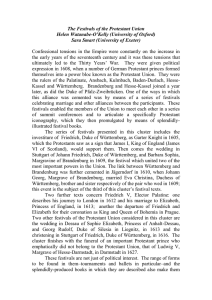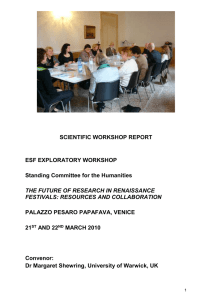The role of science festivals Please share
advertisement
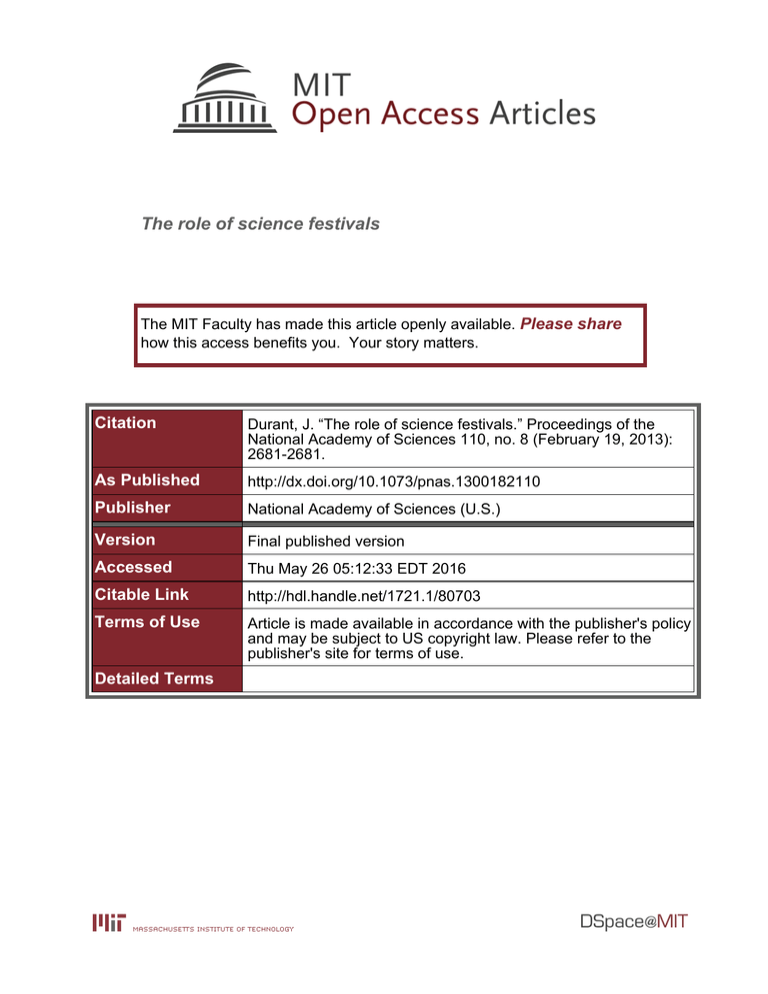
The role of science festivals The MIT Faculty has made this article openly available. Please share how this access benefits you. Your story matters. Citation Durant, J. “The role of science festivals.” Proceedings of the National Academy of Sciences 110, no. 8 (February 19, 2013): 2681-2681. As Published http://dx.doi.org/10.1073/pnas.1300182110 Publisher National Academy of Sciences (U.S.) Version Final published version Accessed Thu May 26 05:12:33 EDT 2016 Citable Link http://hdl.handle.net/1721.1/80703 Terms of Use Article is made available in accordance with the publisher's policy and may be subject to US copyright law. Please refer to the publisher's site for terms of use. Detailed Terms OPINION OPINION The role of science festivals John Durant1 Massachusetts Institute of Technology Museum Director and Adjunct Professor in the Science, Technology, and Society Program The wind of change is blowing through the world of science outreach. Tried and tested approaches—in journalism, broadcasting, museums, science centers, and elsewhere— are being reworked in unconventional and sometimes surprising ways. At the same time, older assumptions—about the importance of emphasizing “objectivity” in science, of relying on professional mediators, or of a single-minded focus on conveying factual knowledge to under-informed audiences— are being actively questioned or simply set aside. Not so long ago, science seemed to “know its place” in popular culture. It was found mainly in the science and technology sections of quality newspapers, in specialist “science slots” on radio and TV, in dedicated museums and science centers, and the like. Not so—or at least, not so much— today. Now, science is all over the blogosphere. It’s finding a place or two in prime time radio and TV, and it’s starting to spread to new corners of the public square. Where once you had to know where to look for science outreach, now you’re as likely to come across it in a café, a bar, a theatre, or a club as you are in a university or community college extension program. All around us, the once-bright line between science and popular culture appears to be dissolving. One sign of the times is the recent proliferation of science festivals across the United States. Science festivals are public celebrations of science and technology that span anything from several days to several weeks, and generally involve many different events in many different venues across a community. They may include large public expositions or carnivals; exhibitions, lectures, workshops, discussions, and debates; and both the performing and the visual arts. Until well into the 2000s, there were a mere handful of such festivals in North America. But following the launch of the citywide Cambridge, MA Science Festival in 2007, others have quickly sprouted up all over the country. With the support of the National Science Foundation, a group of four emerg- ing science festivals established the Science Festival Alliance (SFA) in 2009. In just 3 years, the network has grown to around two dozen science festival initiatives, and expects to be serving twice this number by 2015.* Through an NSF grant that funds the SFA, we have been able to conduct evaluations of several sites over 3 years, telling us that these festivals are having a positive impact on large numbers of people, that they’re effectively engaging underserved audiences, and that they’re particularly good at connecting audiences directly with professional scientists and engineers.† But beyond these undoubtedly important results, what stands out for me is the sheer inventiveness of the science festival scene. Over the past few months, a dedicated (and fast moving) science festival aficionado could have gone on a science crawl of cafés, bars, and restaurants in San Francisco’s Mission District; attended The Story Collider, a live science story-telling event in New York; cheered on historians of science mashing it up with improv comedians in Philadelphia; run the controls under the Fountains of Bellagio in Las Vegas; watched Icarus at the Edge of Time, a full-orchestral work plus animated film and live narrator in New York; and much, much more. What these and hundreds of other science festival events across the country are demonstrating is that a huge amount of creative energy is currently being expended in finding new ways to link scientists and sciencewatchers with audiences. Eating bugs with the symphony in Raleigh, throwing out the first pitch with a robot in Philadelphia, or learning about physics by flipping ollies at a San Diego skate park; all of these are now part of the science festival scene. If you can dream up some kind of creative new science event, the chances are pretty good that a science festival organizer somewhere will be happy to give it a try. I’d like to see this experimental approach to science outreach extend far more widely. Frankly, every community in the country that boasts a research university, a sciencebased company, or a science-based non- Durant John Durant. profit (which is pretty much every community in the country) ought to have a science festival of its own. Such festivals don’t need to be big and expensive; what they need to be is creative and relevant. We need science festivals, not only in the big metropolitan centers, but also in smaller cities, towns, and rural communities across the United States. And, like the communities they’re designed to serve, these festivals need to be endlessly and wonderfully diverse. Every American deserves to live within reach of a science festival. The SFA is gearing up to help make this a reality, and I hope that all scientists will join them in this effort. One thing’s for sure: the country will be much the better for it. Author contributions: J.D. wrote the paper. Conflict of interest statement: John Durant is Principal Investigator on an NSF grant and recipient of a Sloan Foundation grant that fund the Science Festival Alliance and related activities. E-mail: jdurant@mit.edu. 1 * For more details about the work of SFA, see: www.sciencefestivals.org. † Goodman Research Group, Inc. (2012). The Science Festival Alliance: Creating a Sustainable National Network of Science Festivals: Year 2 Summative Evaluation. Cambridge, MA. PNAS | February 19, 2013 | vol. 110 | no. 8 | 2681

